Paris is one of the world's most fascinating and beautiful cities. With its cobbled streets, quaint cafés and iconic monuments, the city is a historical and cultural gem that can be explored for days on end without ever getting bored. But what also makes Paris so special are its stories, anecdotes and unusual places.
Behind its streets, its historic buildings, its relics, its basements and even its hotels, lie facts and unusual stories and anecdotes that fascinate us. We invite you to discover the secrets of the most emblematic objects and places, as well as the surprising spots that make up Parisian heritage. We warn you, you're about to see the capital in a whole new light!
Did you know, for example, that the Eiffel Tower was originally due to be dismantled after the 1889 Universal Exhibition, but that its transformation into a radio antenna saved it from destruction? Or that the Père-Lachaise cemetery is home to the graves of such luminaries as Oscar Wilde, Edith Piaf and Jim Morrison? Why is the Sacré Coeur so white, and where does the story of the Phantom of the Opera come from?



 Did you know? The expression "to wait 107 years" is linked to the cathedral of Notre-Dame de Paris.
Did you know? The expression "to wait 107 years" is linked to the cathedral of Notre-Dame de Paris.
"We're not going to wait a hundred and seven years!"This typically French expression, as grumpy as it is exaggerated, has its roots in medieval Paris. Between dust and hammers, it comes from the interminable construction site of Notre-Dame de Paris, where the wait put Parisians' legendary patience to the test. [Read more]



 Did you know? Here are 4 anecdotes about Notre-Dame de Paris in anticipation of its reopening.
Did you know? Here are 4 anecdotes about Notre-Dame de Paris in anticipation of its reopening.
It's one of the most emblematic monuments in Paris! Notre-Dame de Paris cathedral, located on the Île de la Cité, is brimming with stories and secrets! As it prepares to reopen, here are a few anecdotes about it! [Read more]



 Did you know: why is it always windy in Paris metro stations?
Did you know: why is it always windy in Paris metro stations?
Draughts in the corridors of the Paris metro are commonplace. But why is there so much wind in the capital's basements? We explain. [Read more]

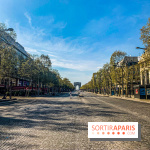

 Did you know? Why are the Champs-Elysées so named?
Did you know? Why are the Champs-Elysées so named?
Do you know the origin of the name of the Champs-Elysées, the famous Parisian avenue? Created in 1674 by André le Nôtre and officially named in 1698, this royal thoroughfare takes its name from Greek mythology, we tell you. [Read more]



 Did you know? A terrible story lies behind this cursed house near Pigalle
Did you know? A terrible story lies behind this cursed house near Pigalle
Terrible tales are not lacking in such an ancient capital... Discover the macabre tale that inhabits number 1 Avenue Frochot, in the Pigalle district, where there seems to be a real haunted house... [Read more]

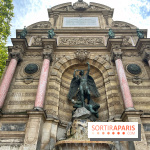

 6 mysterious and esoteric anecdotes about Parisian monuments
6 mysterious and esoteric anecdotes about Parisian monuments
Paris is a mysterious capital... Between alchemy, astrology and witchcraft, the city and its monuments hide many esoteric anecdotes, for a magical and historic stroll through three Parisian arrondissements! [Read more]



 Did you know? This is the oldest clock in Paris and its fascinating history.
Did you know? This is the oldest clock in Paris and its fascinating history.
Do you know the oldest public clock in Paris, still in operation? Mounted on the walls of the Conciergerie in the heart of the Ïle de la Cité, this clock has been telling the time since 1371. Commissioned by Charles V, the clock marks the king's time. This public clock, still in operation today, embodies six centuries of history and impressive mechanics, we tell you. [Read more]
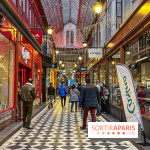


 Did you know? Passage Jouffroy hides a gold ingot and Paris's first fast-food restaurant!
Did you know? Passage Jouffroy hides a gold ingot and Paris's first fast-food restaurant!
The Passage Jouffroy, located between the Grands Boulevards and rue de la Grange-Batelière, is a place rich in surprises and historical anecdotes. Built in 1846, it is famous for its metal architecture and glass roof, which have inspired many other Parisian passages. This emblematic site is home to unique boutiques and an unusual story revolving around a mysterious gold ingot that caused a sensation in the 19th century. To get there, you can enter either from Boulevard Montmartre at the Musée Grévin, or from Rue de la Grange-Batelière, each entrance offering a different perspective on this space steeped in history. [Read more]



 Did you know? The ring road, once inhabited by the poorest of the poor, was called the Zone.
Did you know? The ring road, once inhabited by the poorest of the poor, was called the Zone.
Before it became a huge thoroughfare around the capital for motorists, the Paris ring road had a less than glorious past. At the edge of the city, between Paris and the suburbs, this space was long nicknamed the Zone, the only place where the poorest could find housing. [Read more]



 Did you know? The Palais de l'Elysée houses an hourglass that will take a thousand years to run down.
Did you know? The Palais de l'Elysée houses an hourglass that will take a thousand years to run down.
It's an original and fascinating work of art, created by French artist Benoît Pype: the millennial hourglass should take 1,000 years to run down. It is installed in the office of the French President. [Read more]



 Did you know? Why is there an old safe in the basement of the Monoprix on the Champs-Elysées?
Did you know? Why is there an old safe in the basement of the Monoprix on the Champs-Elysées?
Did you know that the basement of the Monoprix on the Champs-Élysées hid an enormous safe door? We tell you the story. [Read more]



 Paris: do you know these 21 sculptures in the Parc de Bercy?
Paris: do you know these 21 sculptures in the Parc de Bercy?
Parc de Bercy may be appreciated for its tranquility and greenery, but it's also known for its 21 large sculptures. So, what are they all about? And which artist is behind these bronze pieces that take us on a journey? We tell you all about it! [Read more]



 Did you know? An upside-down car sits on a lamppost in La Défense!
Did you know? An upside-down car sits on a lamppost in La Défense!
Since 2019, a car has been parked right next to La Défense's Grande Arche. But it's not parked properly, as it's sitting on top of a lamppost, upside down! This work by Benedetto Bufalino was intended to be temporary, but has now been installed permanently. [Read more]



 Did you know? Paralympic medals contain a piece of the Eiffel Tower!
Did you know? Paralympic medals contain a piece of the Eiffel Tower!
In February 2024, the medals for the Paris 2024 Olympic and Paralympic Games were unveiled, with an impressive feature: each one contains a piece of the Eiffel Tower! [Read more]



 Did you know? This small cannon in the garden of the Palais-Royal was used as a clock in the 18th century.
Did you know? This small cannon in the garden of the Palais-Royal was used as a clock in the 18th century.
The capital really is full of little curiosities, not least in the gardens of the Palais-Royal, where a small cannon takes pride of place. Between 1786 and 1911, it was used not as a weapon, but as a clock! Find out how. [Read more]



 Did you know? 3 anecdotes about the Pont des Arts aka Pont d'Aya
Did you know? 3 anecdotes about the Pont des Arts aka Pont d'Aya
The Pont des Arts, illuminated for the opening ceremony of the Olympic Games, with the performance of Aya Nakamura and the Garde Républicaine, is the source of much ink and buzz on the networks. We take a look back at this emblematic building and its memorable anecdotes, now joined by Aya's song. [Read more]



 Did you know? The Olympic mascot is a French invention? The story of Schuss à Phryge
Did you know? The Olympic mascot is a French invention? The story of Schuss à Phryge
While we're seeing Phrygians on every street corner for the Paris 2024 Olympics, we're taking you back through the history of Olympic mascots. Often mocked, but always acclaimed, did you know that we were the first to integrate a mascot into the Olympic Games? [Read more]



 Paris 2024 Olympics: who was the rider on the silver horse at the opening ceremony?
Paris 2024 Olympics: who was the rider on the silver horse at the opening ceremony?
Goddess Sequana's fantastic ride across the Seine for the Opening Ceremony of the Paris 2024 Olympics left a lasting impression. Were you wondering who the goddess Sequana was behind the hood of this incredible crossing? We tell you all about it. [Read more]



 Did you know? Who was the Quasimodo at the opening ceremony of the Paris 2024 Olympics?
Did you know? Who was the Quasimodo at the opening ceremony of the Paris 2024 Olympics?
During the opening ceremony of the Paris 2024 Olympic Games, a tribute to Quasimodo was broadcast, with a scene of him hanging from the brand-new spire of Notre-Dame Cathedral. Wondering who took on the role of Victor Hugo's iconic character for a brief appearance 90 meters above the ground, offering this memorable sequence? We tell you all about it. [Read more]

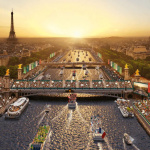

 Did you know? What were the craziest Olympic opening ceremonies in history?
Did you know? What were the craziest Olympic opening ceremonies in history?
The Opening Ceremony of the Paris 2024 Olympic Games is approaching. A ceremony that promises to be unique in the world since, for the first time, it will be held not in a stadium, but in the very heart of the capital. This is an opportunity to look back at some of the most beautiful and wildest Olympic opening ceremonies in history. [Read more]



 Did you know? Villa Windsor, the former home of English royalty, is about to be unveiled to the public
Did you know? Villa Windsor, the former home of English royalty, is about to be unveiled to the public
The former residence of the Duke and Duchess of Windsor, located in the Bois de Boulogne, is to be refurbished and opened to the public by 2025. Perfect for a dive into the history of English royalty, among other things! [Read more]
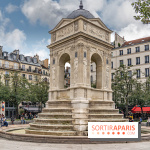


 Did you know? Why is it called the Fountain of the Innocents?
Did you know? Why is it called the Fountain of the Innocents?
The Fontaine des Innocents, the jewel in the crown of Paris's Les Halles district, is back in full view and freshly restored, just ahead of the Olympic Games. Do you know the history of this emblematic monument, witness to Parisian history since the 16th century, and why it bears its name? We tell you. [Read more]



 Did you know? Discover the fascinating history of the Westin Paris Vendôme
Did you know? Discover the fascinating history of the Westin Paris Vendôme
The Westin Paris Vendôme is not only a renowned hotel in the heart of Paris, it's also a place steeped in history. Located on rue de Castiglione, this iconic establishment opened its doors in 1878, and continues to seduce us with its timeless elegance. Immerse yourself in the history of its rich past and discover why it remains a must-visit address in Paris. [Read more]

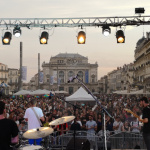

 Did you know? What is the origin and history of the Fête de la Musique?
Did you know? What is the origin and history of the Fête de la Musique?
Why is the Fête de la Musique celebrated on June 21? Who created the Fête de la Musique, where did it take place and when was the first edition? These are just some of the questions that deserve to be asked about the origins of the festival, and its history. [Read more]



 Did you know? Why do we celebrate Father's Day? A look back at the origins of this tradition
Did you know? Why do we celebrate Father's Day? A look back at the origins of this tradition
Father's Day is celebrated in France this Sunday, June 16, 2024, an annual celebration that honors dads. When did Father's Day begin? Who created it? When is it celebrated and why? We tell you all about its origins and history. [Read more]



 Did you know? This Belvédère kiosk in the Yvelines is a remnant of the Universal Exhibition.
Did you know? This Belvédère kiosk in the Yvelines is a remnant of the Universal Exhibition.
How about discovering the Kiosque du Belvédère de Châtillon, nestling in the Rosny-sur-Seine forest in the Yvelines department? We tell you all about its history and how to find it. [Read more]

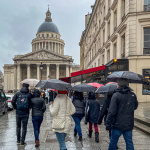

 Did you know that RATP lends umbrellas free of charge?
Did you know that RATP lends umbrellas free of charge?
It's raining and you don't have an umbrella? Did you know that RATP can lend you one? To protect yourself on rainy days, all you have to do is ask at the reception desk of one of the participating stations and pay a deposit, which will be returned to you when you return the umbrella. [Read more]



 Unusual in the Yvelines: the superb waterfall grotto at Parc du Dr Fauvel in Villennes-sur-Seine
Unusual in the Yvelines: the superb waterfall grotto at Parc du Dr Fauvel in Villennes-sur-Seine
Villennes-sur-Seine, a charming commune in the Yvelines department, is home to a little-known treasure: the waterfalls of the Parc Fauvel grotto. Located some 36 kilometers west of Notre-Dame Cathedral in Paris, this small town near Poissy on the left bank of the Seine boasts a park that combines history and nature. The park, an example of English romanticism, features an unusual grotto and waterfalls. [Read more]

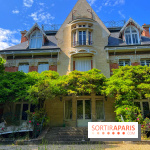

 La Hublotière, Hector Guimard's Art Nouveau villa opens this summer in Le Vésinet (78)
La Hublotière, Hector Guimard's Art Nouveau villa opens this summer in Le Vésinet (78)
Have you heard of La Hublotière? This Art Nouveau villa, designed by Hector Guimard, is hidden away in the heart of Le Vésinet, in the Yvelines department. Exceptionally, it's opening its doors to the public this summer - a golden opportunity to discover our heritage! [Read more]

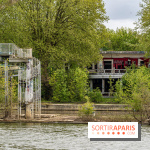

 Did you know? There's an abandoned "ghost" water park in the Yvelines department.
Did you know? There's an abandoned "ghost" water park in the Yvelines department.
There's no shortage of amazing sites in the Paris region. Such is the case of this "ghost" water park in the Yvelines department. Abandoned for more than 20 years and listed as a Monument Historique in 2009, the former leisure center was a popular spot for families from its inauguration in 1935, and remained so for several decades. Here's the story. [Read more]
All you have to do is get your science out and take a stroll around Paris with your friends or family!
Dates and Opening Time
From November 7, 2023 to December 31, 2027